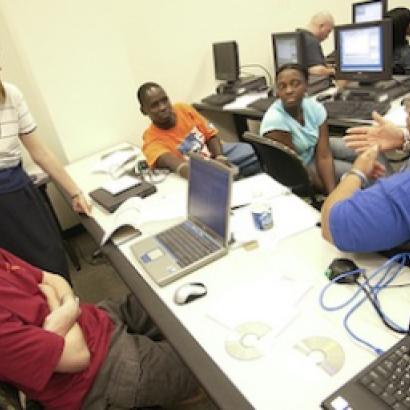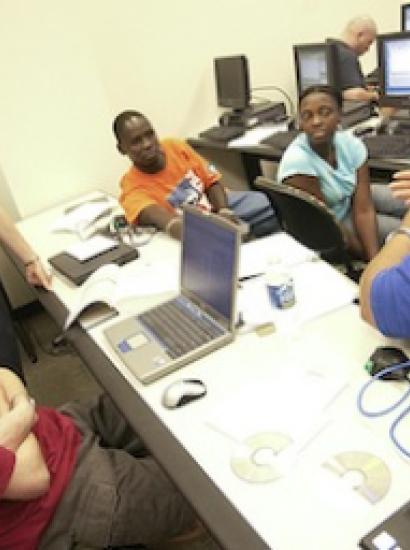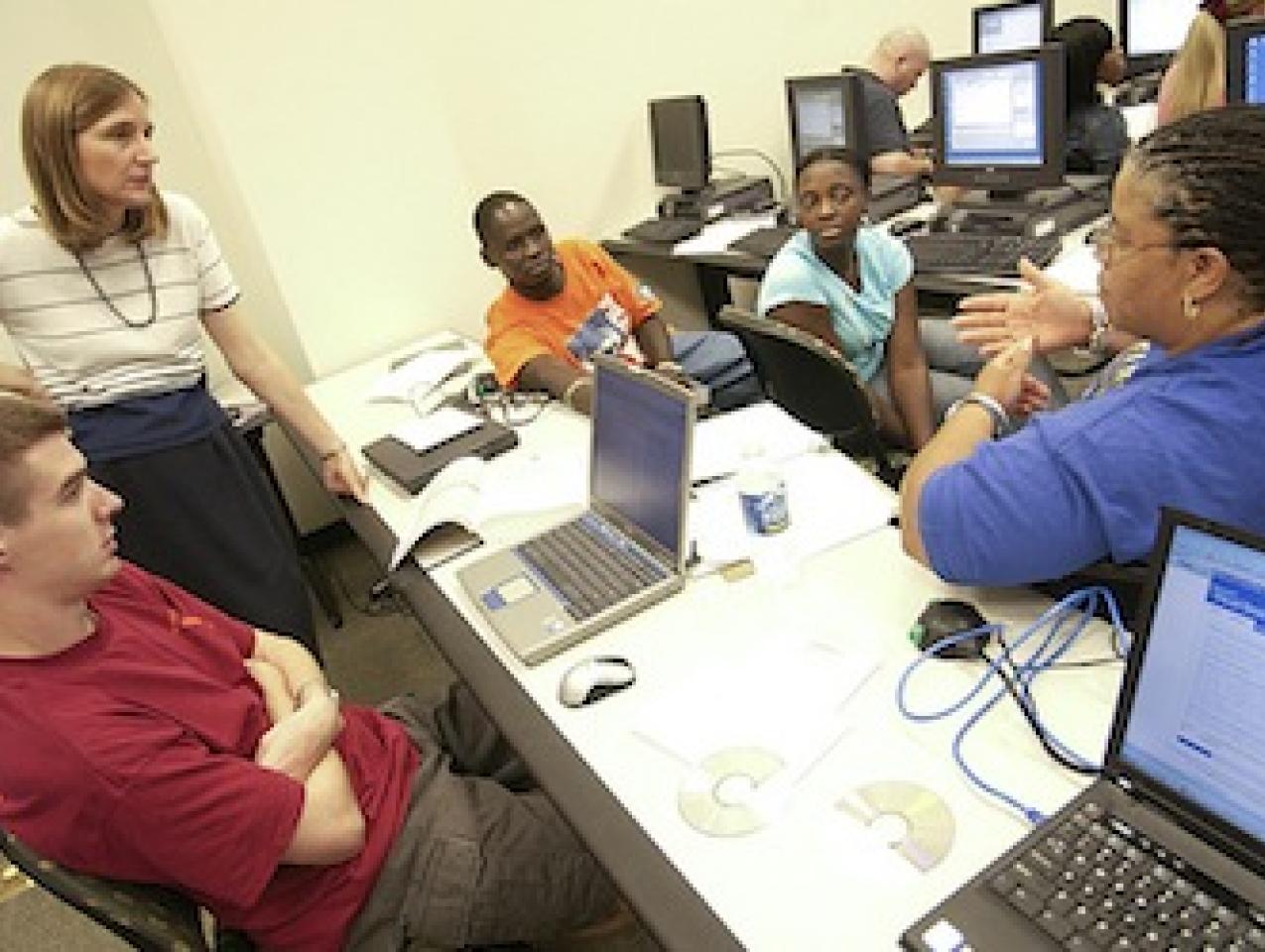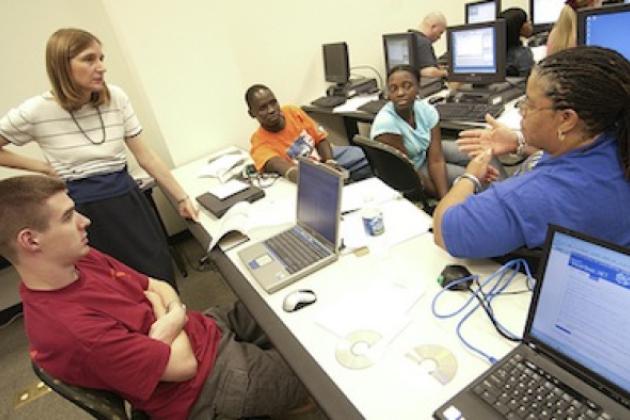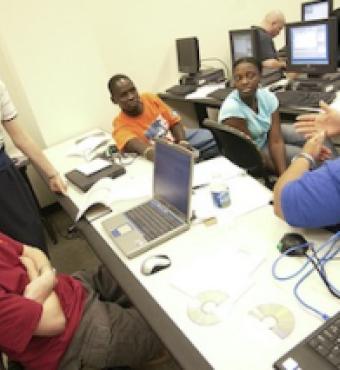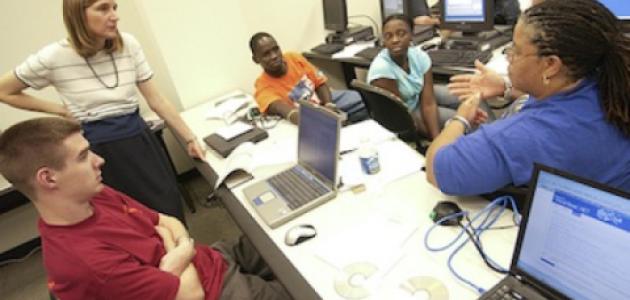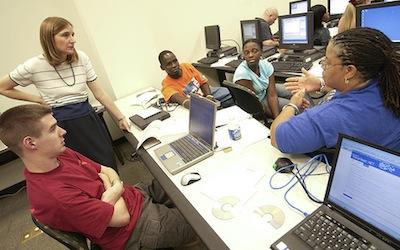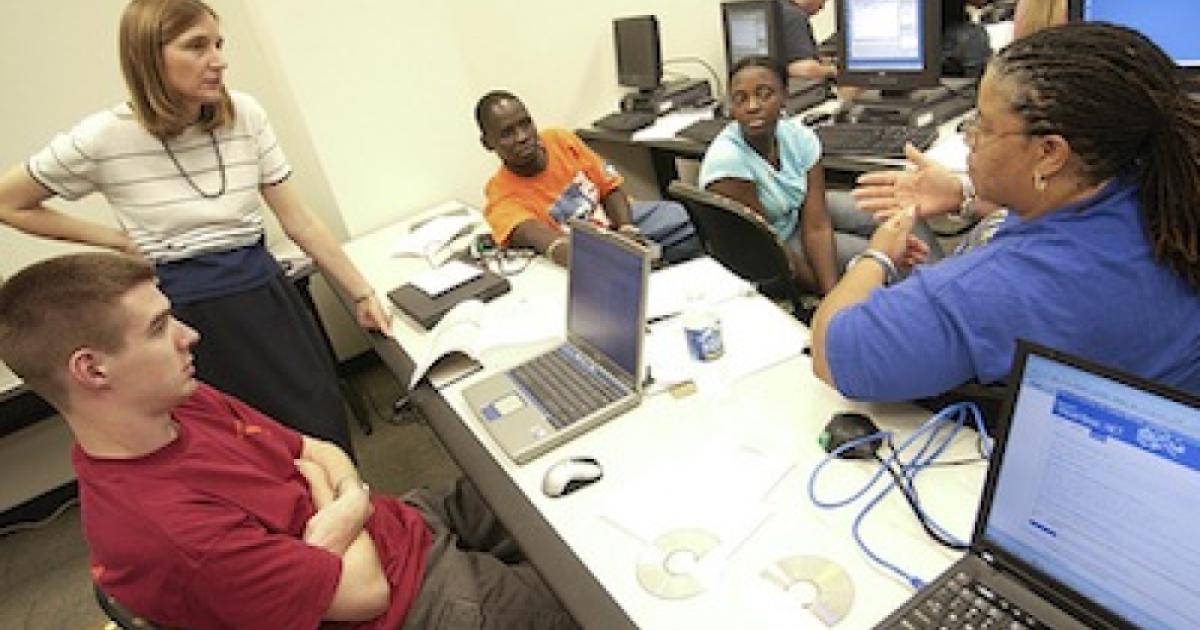The numbers reported by the Nation’s Report Card of the National Assessment of Educational Progress (NAEP) show that approximately two-thirds of American public school students achieve below grade level in reading and mathematics. This is old news, and yet reform efforts over three decades have yielded insignificant improvements. Why? And what can be done?
The needed resources and technologies are here. The U.S. is near the top of the list in per student spending on public schools and is well known for its advanced technologies. Little used educational technologies could transform our schools from their deplorable status into successful institutions that would bring the vast majority of American children to grade-level performance. Among the technologies available, two in particular, used wisely, show substantial effects: incentives and automated tutoring.
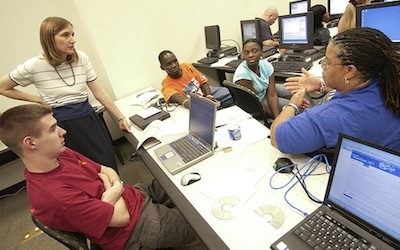
Photo credit: Kennesaw State University
What “carrots and sticks” should be employed to motivate children to fully participate in learning? Though negative feedback in the form of sanctions and punishments such as detention is sometimes appropriate to correct a student’s behavior, “carrots” are usually most appropriate.
What are the ways they can work?
Left alone, for example, most children are curious, which can provide a strong incentive to learn on their own and in school. Children also tend to be competitive and often love games, sports, and other challenges that provide opportunities to win and intermediate incentives along the way to the end. Their near obsession with electronic computer games provides a revealing example.
Incentives in the Classroom
Incentives also affect students in school; many strive to do better when classrooms encourage various kinds of academic contests. They also enjoy individual challenges as provided by some kinds of educational games and opportunities to demonstrate their learning including during lessons and on tests. Many enjoy mastering rote tasks including the memorization of prose, poetry, facts, and trivia. Psychological studies support these observations about incentives and their effects, though the application of incentives requires wise and artful parents, teachers, tutors, coaches, and others.
As students mature, they may realize the longer-term benefits of academic accomplishments. High grades and test scores may help them gain scholarships and admission to the best universities. They may also learn that educational attainment may bring them longer-term economic rewards as they grow into adults. Both short- and long-term incentives may be present in schools today, but they are rarely employed extensively and well.
Philosophical traditions unduly influence many “progressive” public school educators. The best example is Rousseau’s view in Emile (1762) of the child as a “noble savage” that is corrupted by parents and teachers. Jean Piaget provides a modern example; widely influential, he held that students are unready for much learning until they have gone through hereditarily predetermined stages. Yet, large-scale demonstrations clearly show stupendous effects of incentives, including monetary ones, in schools. The Dallas O’Donnell Foundation saw the number of students passing college-level Advanced Placement examinations increase by a factor of ten when the inner-city students were offered the incentive of $100 each for a passing score. This amount is less than one percent of the average per student cost of public education.
Short-term monetary rewards are exceedingly rare in American schools. Some stakeholders question the ethics of paying students for academic performance. Yet, research has shown how effective this can be in spurring students to master difficult or boring subjects. Even quasi-monetary awards, such as script-money, merit points, and honor roll status, can help motivate children to gain academic skills and knowledge. Monetary incentives deserve further exploration and use, particularly since they influence much of adult work.
The Promise of Online Tutoring
A second technology is old, highly effective, and can now be automated—tutoring. Why is traditional teaching ineffective by comparison? Nearly all classes have both fast and slow learners that range as many as five grade levels in the work they can do; in a six-grade class, for example, some students can do high school work while others are several grade levels behind sixth.
Teachers might reasonably pace their lessons at the sixth-grade level, meaning some students are taught what they already know while others are incapable of learning what is presented. For the same reason, when either kind of student raises a question, the teacher’s answer wastes five minutes of precious class time for many students. Traditional, conventional class teaching is not only a time-wasting endeavor, but it is also boring and disincentivizing for many students.
Tutoring has long been recognized as effective because it can suit the lesson level and pace to each learner or relatively homogeneous small group. Parents and other citizens believe that tutoring for individual children and adolescents yields positive, possibly spectacular results. Indeed, some parents spend more than $100 an hour to help their children keep up with their classes and to pass college entrance examinations.
The parents of more than one million children educate their kids at home largely through tutoring because they believe it more effective than the traditional classroom alternative. Research (employing randomized comparison groups) shows parents are right. Tutored students on average exceed nearly 80 percent of conventionally taught comparison groups in achievement.
The high costs and shortages of effective tutors make tutoring rare in public schools. But “Intelligent Tutoring Systems,” that is, automated, online, individually paced tutoring systems remove these obstacles even with “dumb terminals” lacking usual processors. They provide tutoring 24/7 nearly anywhere at a fraction of the cost of expert human tutors, and yet they nearly equal their effectiveness even at the present early stages of the technology. How do they work?
Top subject matter authorities and learning experts have designed such automated tutoring. It can be readily programmed, tried out with students, evaluated, revised, and, finally, delivered cheaply over the Internet at many sites. Continuing analysis and redesign can lead to continuous improvement; once improved, such tutoring systems can be further improved. As in other computer applications, they are not subject to the fatigue, straying attention, performance plateau, and other idiosyncrasies of human tutors.
Such computer-tutoring systems can supplement or substitute for conventional schooling. My Hoover Institution Koret Task Force on K-12 Education colleagues Terry Moe and John Chubb, (in Liberating Learning: Technology, Politics, and the Future of American Education) predict that technology will “creatively destroy” failing K-12 schools and that they will be replaced by charter schools and other forms of school choice that better foster effective automated teaching and tutoring. Recent psychological research about student incentives and new tutoring technology strongly suggest they are right.








